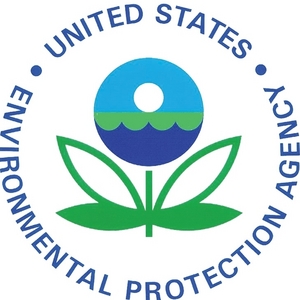US EPA finalizes 2013 RFS volumes; Nat'l Biodiesel Board pleased

August 6, 2013
BY Ron Kotrba
The U.S. EPA finalized the much-anticipated 2013 percentage standards for the four fuel categories under the renewable fuel standard (RFS) program established by Congress. The final 2013 overall volumes and standards require 16.55 billion gallons of renewable fuels to be blended into the U.S. fuel supply (a 9.74 percent blend). This standard specifically requires 1.28 billion gallons of biomass-based diesel (1.13 percent), which was already finalized last year; 2.75 billion gallons of advanced biofuels (1.62 percent); and only 6 million gallons of cellulosic biofuels (0.004 percent). EPA stated that these standards reflect the agency’s updated production projections, “which are informed by extensive engagement with industry and a thorough assessment of the biofuels market.”
Since the volume requirements were finalized so late, EPA is extending the deadline to comply with the 2013 standards by four months, to June 30, 2014. “A January 2013 ruling by the U.S. Court of Appeals required the agency to reevaluate projections for cellulosic biofuel to reflect market conditions,” the EPA stated. “The final 2013 standard for cellulosic biofuel announced today was developed in a manner consistent with the approach outlined in that ruling.”
Advertisement
Advertisement
The National Biodiesel Board commended the agency for maintaining a strong 2013 advanced biofuel requirement under RFS.
“With this decision, the EPA is helping consumers, creating jobs and reducing emissions,” said Anne Steckel, NBB's vice president of federal affairs. “This target will clearly be met, and it will continue to diversify our fuel supplies so that we're not at the mercy of global oil markets every time we fill up at the pump.”
Under the RFS, advanced biofuels must reduce lifecycle greenhouse gas emissions by at least 50 percent compared with petroleum fuels. Biodiesel is the first and only advanced biofuel under the program to reach commercial-scale production nationwide, and the first to break 1 billion gallons of annual volume.
Advertisement
Advertisement
With nearly 1.1 billion gallons of production last year, the biodiesel industry produced enough fuel to fill 87 percent of the total advanced requirement in 2012. The industry is on pace to fill a majority of the requirement again this year.
“Biodiesel is proving that advanced biofuels are working today and that they can reduce prices for consumers,” Steckel said. “The RFS is a critical component to that success, and today's rule will help stimulate new technologies and additional growth. Today's announcement also demonstrates that the EPA has tremendous flexibility in addressing concerns stemming from the various volume requirements under the RFS, and that it is prepared to use that flexibility in a practical way to ensure that the policy is running smoothly.”
EPA noted that during the rulemaking, it received comments from a number of stakeholders concerning the E10 blend wall. Projected to occur in 2014, the blend wall refers to the difficulty in incorporating ethanol into the fuel supply at volumes exceeding those achieved by the sale of nearly all gasoline as E10. Most gasoline sold in the U.S. today is E10. In the rule, EPA announced that it will propose to use flexibilities in the RFS statute to reduce both the advanced biofuel and total renewable volumes in the forthcoming 2014 RFS volume requirement proposal.
Related Stories
The European Commission on July 18 announced its investigation into biodiesel imports from China is now complete and did not confirm the existence of fraud. The commission will take action, however, to address some systemic weaknesses it identified.
On July 18, U.S. EPA announced a reduction in force (RIF) as the agency continues its comprehensive restructuring efforts. With organizational improvements, EPA is delivering $748.8 million in savings.
The U.S EPA on July 17 released data showing more than 1.9 billion RINs were generated under the RFS during June, down 11% when compared to the same month of last year. Total RIN generation for the first half of 2025 reached 11.17 billion.
The U.S. EPA on July 17 published updated small refinery exemption (SRE) data, reporting that six new SRE petitions have been filed under the RFS during the past month. A total of 195 SRE petitions are now pending.
The USDA has announced it will delay opening the first quarterly grant application window for FY 2026 REAP funding. The agency cited both an application backlog and the need to disincentivize solar projects as reasons for the delay.
Upcoming Events










